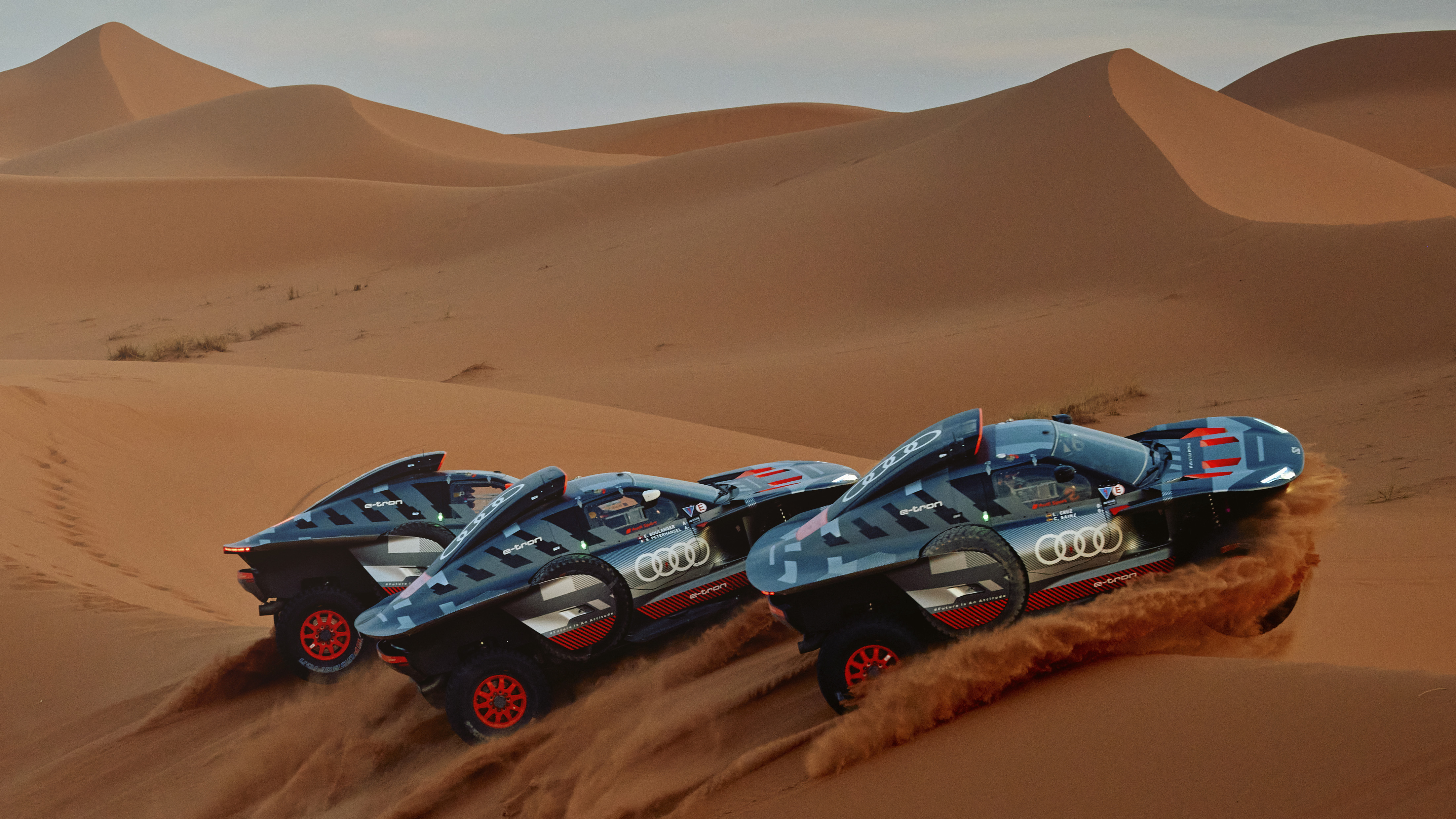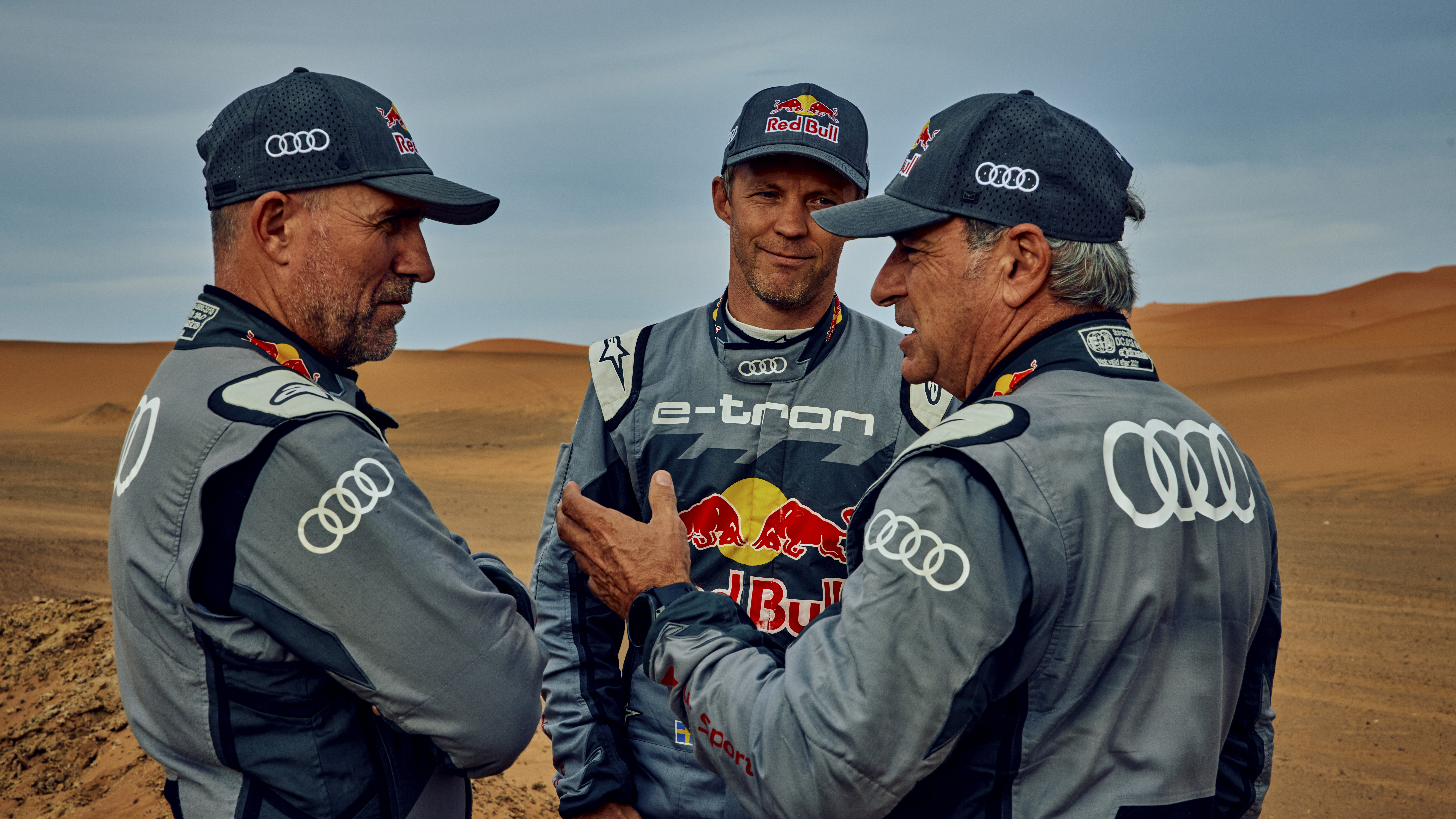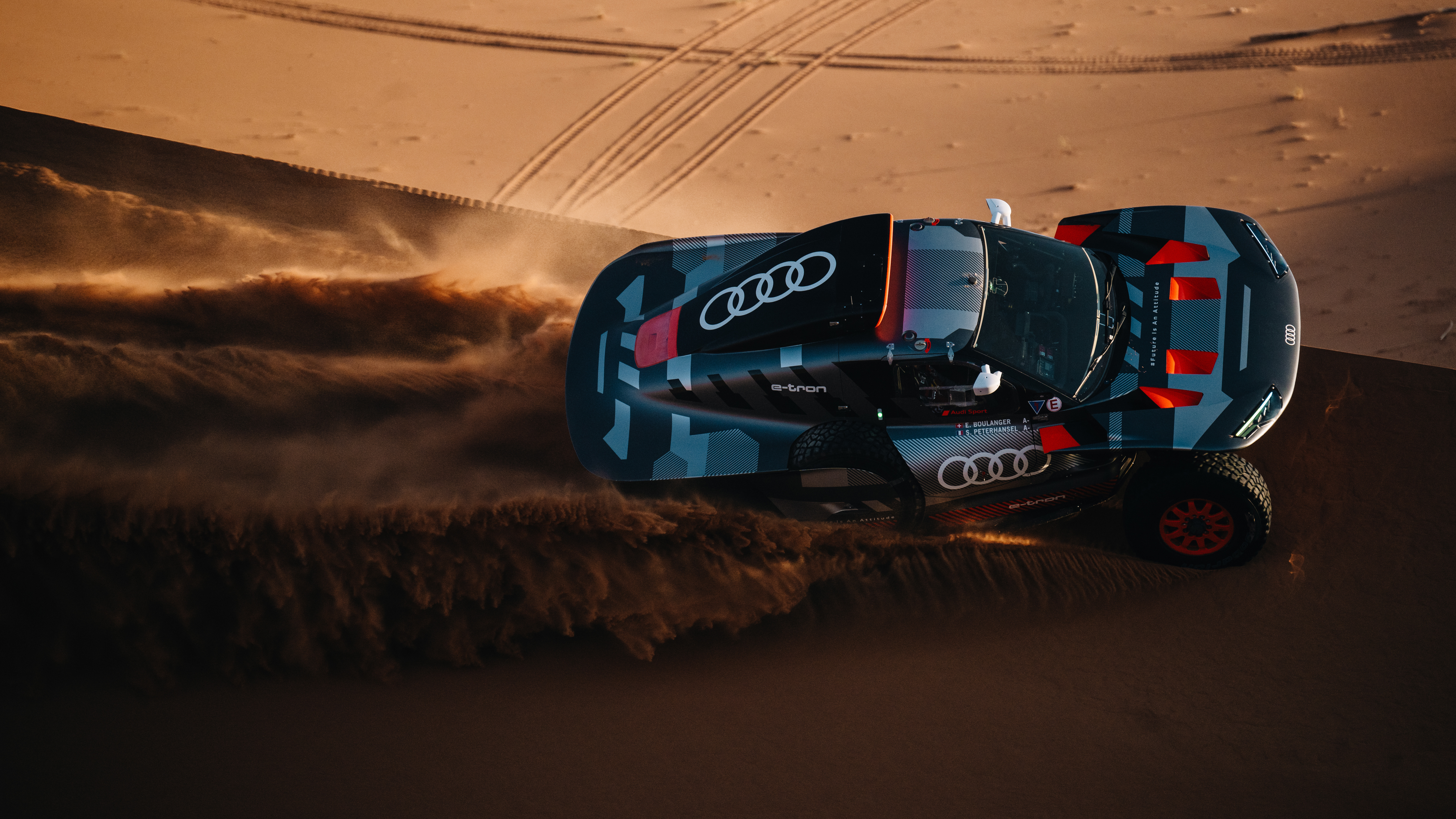
Audi is ready for the world’s toughest race
The 2024 Dakar Rally sees Audi’s take on one of racing’s greatest challenges for the third time. Here’s the story so far…
Will the third time be the charm? That’s what Audi hopes. It’s returning to take on the revered Dakar Rally in 2024 with its pioneering RS Q e-tron. The off-road racer has proved an alternative powertrain concept – it combines an electric drivetrain with a high-voltage battery and super-efficient energy convertor – has the pace and durability to conquer sand dunes, mountain passes, rock beds, jumps and floods.
Some 28 stage podiums, split equally between a 2022 event debut and a 2023 follow-up, are testament to that. But an overall win is the goal when the team gets underway in Saudi Arabia on 5 January.
“Dakar is one of those big races in motorsport like the Indy 500 or Le Mans where everybody cares about the person that won,” says double DTM and World Rallycross champion Mattias Ekström. The Swede returns for 2024 alongside World Rally legend Carlos Sainz and Stéphane Peterhansel (he’s ‘Mr Dakar’, having won it a record 14 times) to complete an unchanged Audi Sport driver line-up.
For this latest attempt, the RS Q e-tron has undergone a host of tweaks. They tell the team’s Dakar story to date. The project was announced in late 2020 as Audi looked to add to its rough-stuff legacy, building on the early-1980s quattro that showed the rallying world permanent four-wheel-drive was the only way to go. In picking the Dakar, the most famous rally-raid of the lot, the manufacturer wanted to improve the performance of the electric drivetrain and battery so those gains could be incorporated into its road cars.
The prototype RS Q e-tron was built in only 12 months – a rapid turnaround for any race car, let alone one so complex. An extensive 5,400-mile test plan followed in Spain and Morocco to fine-tune Motor Generator Units borrowed from Audi’s Formula E car, a high-voltage battery built in-house, and the RS Q e-tron’s on-board charger – a four-cylinder TFSI engine lifted from a DTM tin-top racer. Then came the first crack at Dakar: two weeks of off-piste punishment, where each day can call for up to 520 miles of competitive driving.
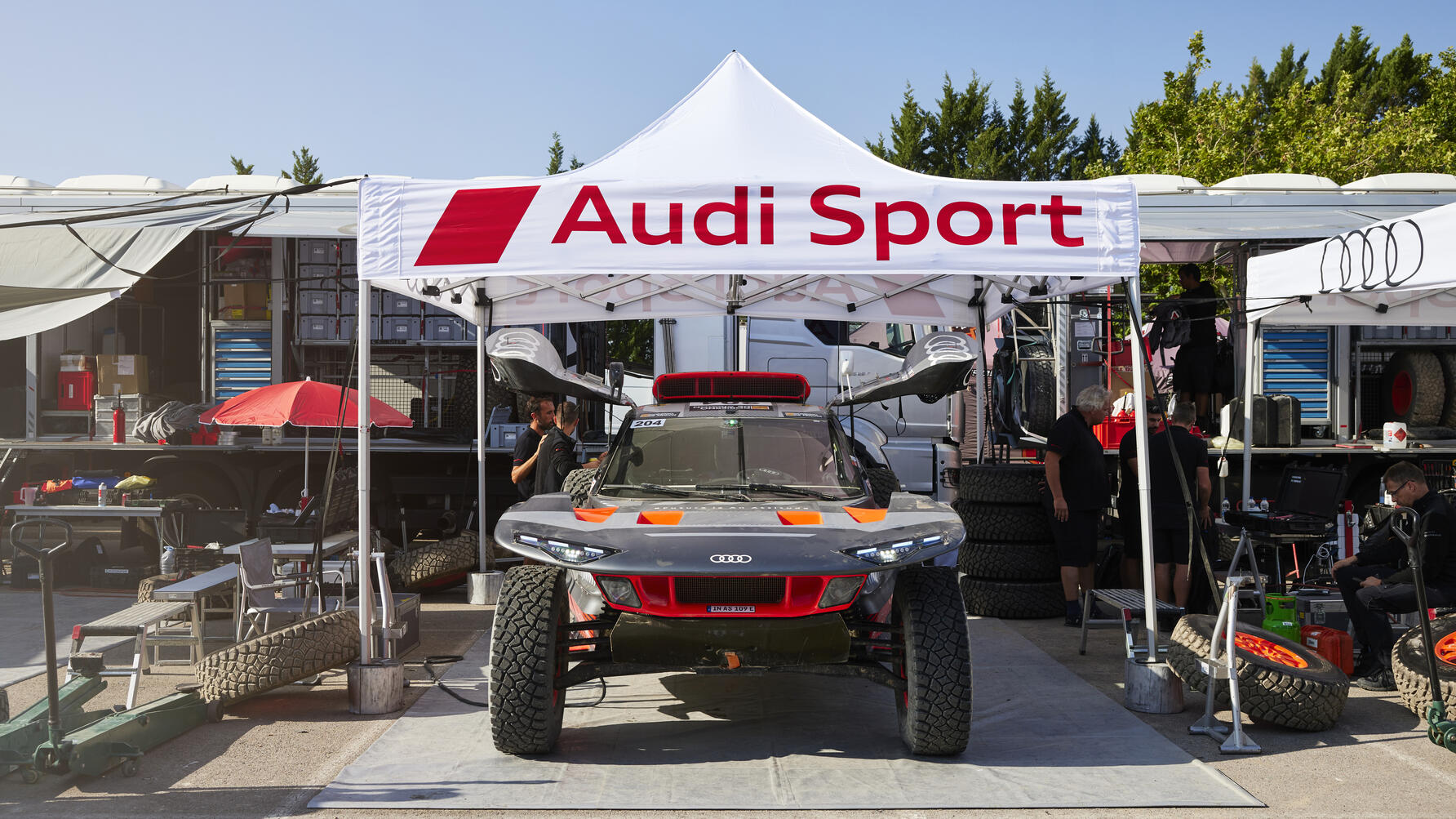
The 2022 edition of the all-terrain enduro gave Audi Sport proof of concept. The powertrain ran without complaint and only four days in, the RS Q e-tron was a stage winner. Sainz and co-driver Lucas Cruz earned that small slice of history, achieving an average speed of 86mph as the torque from electric drive helped them vanquish the dunes. Sainz would top the times one more time while team-mates Ekström and Peterhansel chalked a stage win apiece.
There were navigation niggles along the way, plus the wheel rims and suspension took a beating. That left Ekström as the team’s top finisher, bringing his car home ninth overall. During these setbacks, though, the team was writing a to-do list for how to improve the car – but not before Peterhansel won the Abu Dhabi Desert Challenge outright.
Ekström reckons the key to Dakar success is: “Not to make our best days greater, it’s just to reduce our bad days. That’s where the whole team spirit will be focused on. Try and understand our weakest link in the chain, make some adjustments, then you go and try again.” That approach inspired the modified RS Q e-tron E2 (a model name that pays tribute to the winged quattro S1 E2, a posterchild for rallying’s iconic Group B era) built to tackle the 2023 Dakar.
The second evolution was more aerodynamic, thanks to an all-new body. Drag dropped by some 15% to help the off-roader hit a limited top speed of 105mph. And to get down to the prescribed 2100kg minimum weight for the Dakar’s low-emission T1 Ultimate class, the layers of composite materials were reworked. This also dropped the centre of gravity. Plus, the air-conditioning system was turned down a notch to stop the coolant from freezing and save energy. The two spare tyres concealed behind the doors were made more accessible to speed up puncture repairs. And the cockpit was revised to help drivers read the displays and hit the most vital buttons.
It was back to Morocco for a nine-day test. Then came a proper dress rehearsal: the crews took part in a competitive rally to refine set-up. Sainz’s initial impression was: “Not only the weight, but also its distribution is more favourable now. As a result, the car drifts less, it feels more agile and it’s easier to control.” Several thousand miles under the belt, Audi Sport returned to Saudi Arabia.
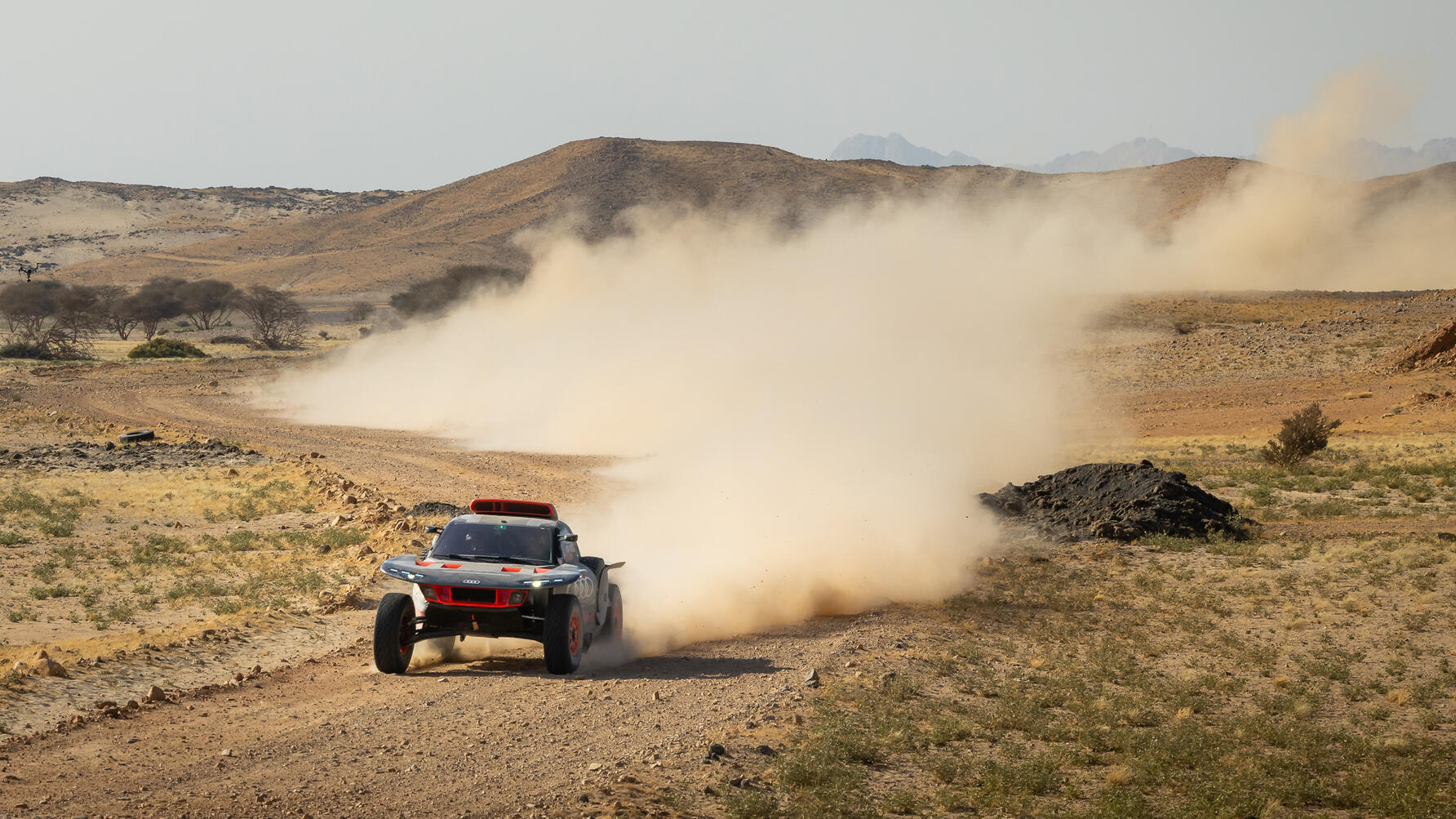
The team bid farewell to 2022 in fine form. On New Year’s Eve, Ekström triumphed on the Dakar’s Prologue (an eight-mile amuse-bouche). The good news kept coming. Sainz won the first proper stage the next day, edging 23 seconds ahead of the field after nigh on 3.5 hours of action.
After such a strong start (cementing the RS Q e-tron as one of the fastest and most efficient creations on the rally) the Dakar reminded everyone why it earned such a fearsome reputation. Floods forced route changes and compacted the sand into a brutal rock-hard surface. Audi Sport’s early turn of speed was hobbled by rocks slashing the tyres to force several roadside pitstops. Two sizeable shunts would ultimately force Peterhansel and Sainz to retire from the whole thing but not before the RS Q e-tron earned another 12 stage podiums – including a clean sweep across the final five days.
“Last year’s Dakar for the Audi team and myself was pretty tough,” reflects Ekström. “We went there with high expectations but didn’t get the result we wanted. We felt that we were pretty sorted. We had smaller issues in my car, then Stéphane and Carlos had the big crashes. Dakar doesn’t forgive anything.”
It was a difficult second album. But then the process could begin again: learn from the challenges to upgrade the RS Q e-tron in time for the 2024 Dakar. That’s borne the third evolution of the RS Q e-tron.
Having gone through the whole package with a fine-tooth comb, the result is an even safer, lighter, more reliable, more comfortable and easier-to-work on challenger. Upgraded springs and dampers better distribute the weight. That will allow for superior body control to improve overall performance as Audi tries to add to its tally of six outright stage wins.
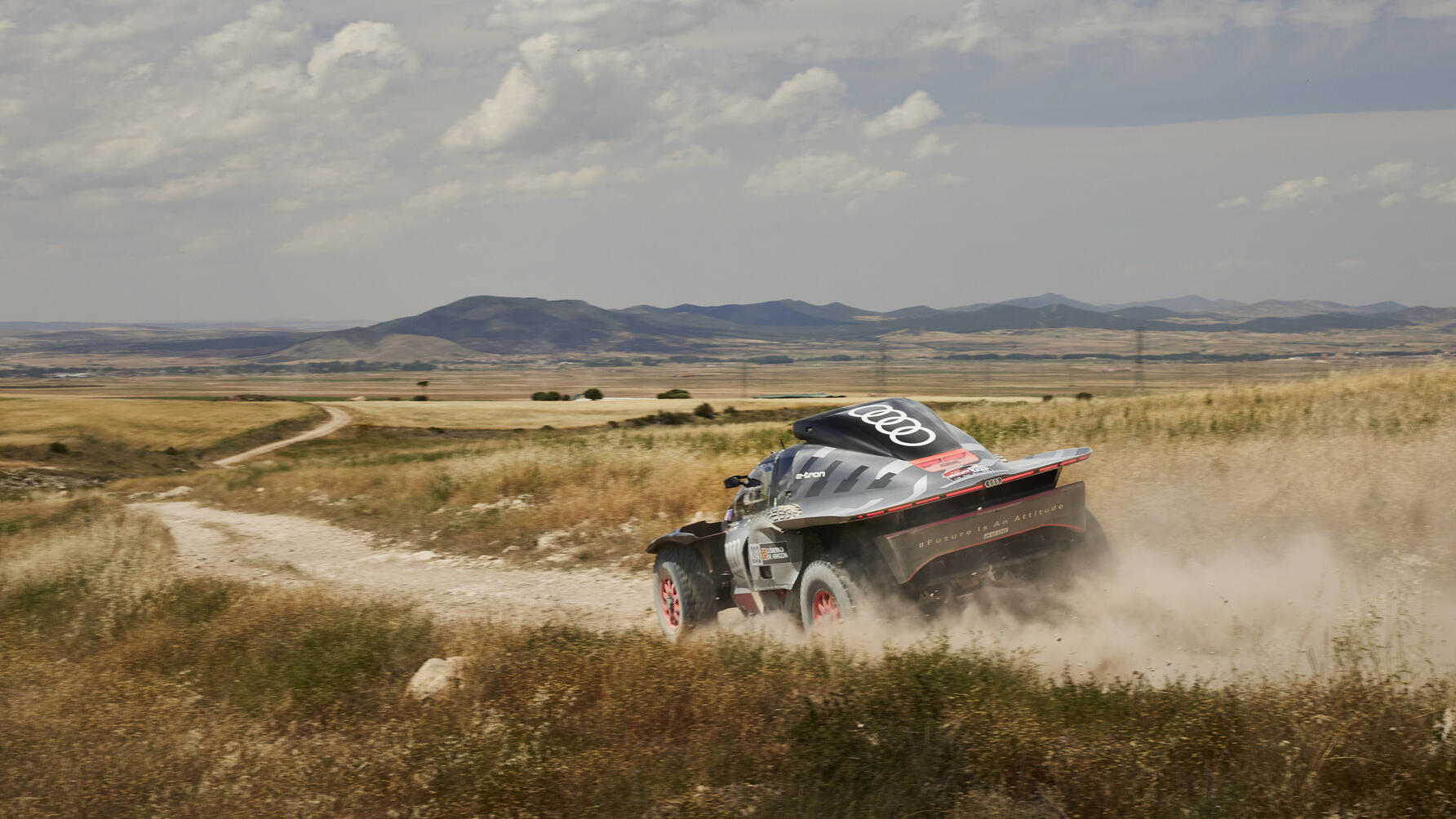
There’s new foam in the seats to help cushion the drivers over that harsh terrain. Ekström notes: “It’s sometimes like a boxing fight. But I am only allowed to receive it – I can never punch back. When you go in the camel grass or in the rough sections, you really feel that you would like to punch back but you can’t. You only get hits. Your body, your neck, your head – it is very physical.”
The carbon fibre-reinforced plastic (CFRP) front crash structure is longer and more energy-absorbent. This move was inspired by the particularly heavy landing on the front axle that did for Sainz on last year’s Dakar. After cresting a dune, he dug in to trigger a somersault.
Only accidents, not technical issues, have caused an RS Q e-tron to DNF during its first two Dakar tilts. But punctures still slowed progress. Stripping the cars revealed stones had penetrated the wheel rims, brake discs and uprights. Accordingly, Audi Sport has increased the clearances to let the debris be thrown clear. The rims are tougher too and the control tyre from supplier BF Goodrich more durable. The bonnet has been reshaped to deflect mud and water away from the windscreen, so the washer fluid bottle should stay fuller for longer – even that has a new cap to make it quicker to top up! Revised bolt connections, improved tool holders, replacing glued joints for locking body components are all there to make servicing simpler and faster.
Testing commenced only four months after the 2023 Dakar attempt. It was back to Yanbu in Saudi so the team could reacquaint itself with the savage rocky surface. Then the car ran in Zaragoza, Spain to hone it for the faster, open sandy plains. It also racked up the miles in Morocco and featured in the Baja Aragon competitive rally just to give everything a run through in exam conditions before one last shakedown in the south of France.
From that seat time, three-time Dakar winner Sainz has come away impressed: “We put the whole Audi team behind it, because three years ago when it all started, it seemed like science fiction, but an effort was made to run with it, winning stages, and we hope this year to be fighting until the end. It's the best Audi, without a doubt. It couldn't be any other way.”
As the 2024 Dakar Rally rolls into view for Audi Sport, Ekström concludes: “Now, it’s time for another try. We’ve done all the homework we can and hopefully it’s enough to go there and win the rally this time. I think we are a bit more humble but also way better prepared.” The constant development of the RS Q e-tron is proof of that. So stay tuned to see how Team Audi Sport do in this year’s incredible Dakar Rally.
For more Audi performance stories, head this way
*This vehicle shown here is the Rally Dakar vehicle that is not available as a production model. Closed course, professional driver. Do not attempt. The Audi RS Q e-tron combines an electric drivetrain with an energy converter system comprising a TFSI engine and generator.
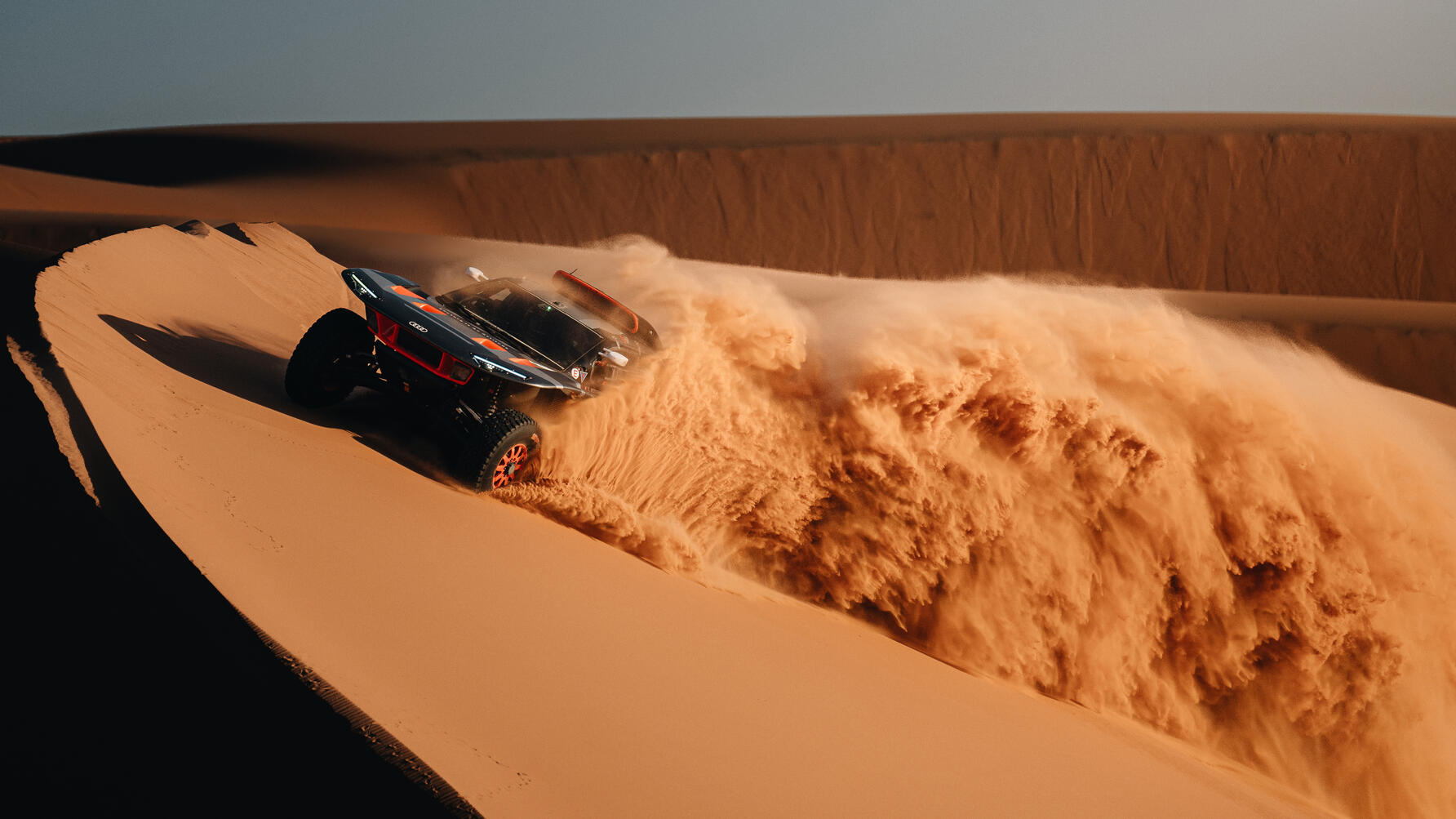
Featured

More from Top Gear
Trending this week
- Car Review
BMW iX3





